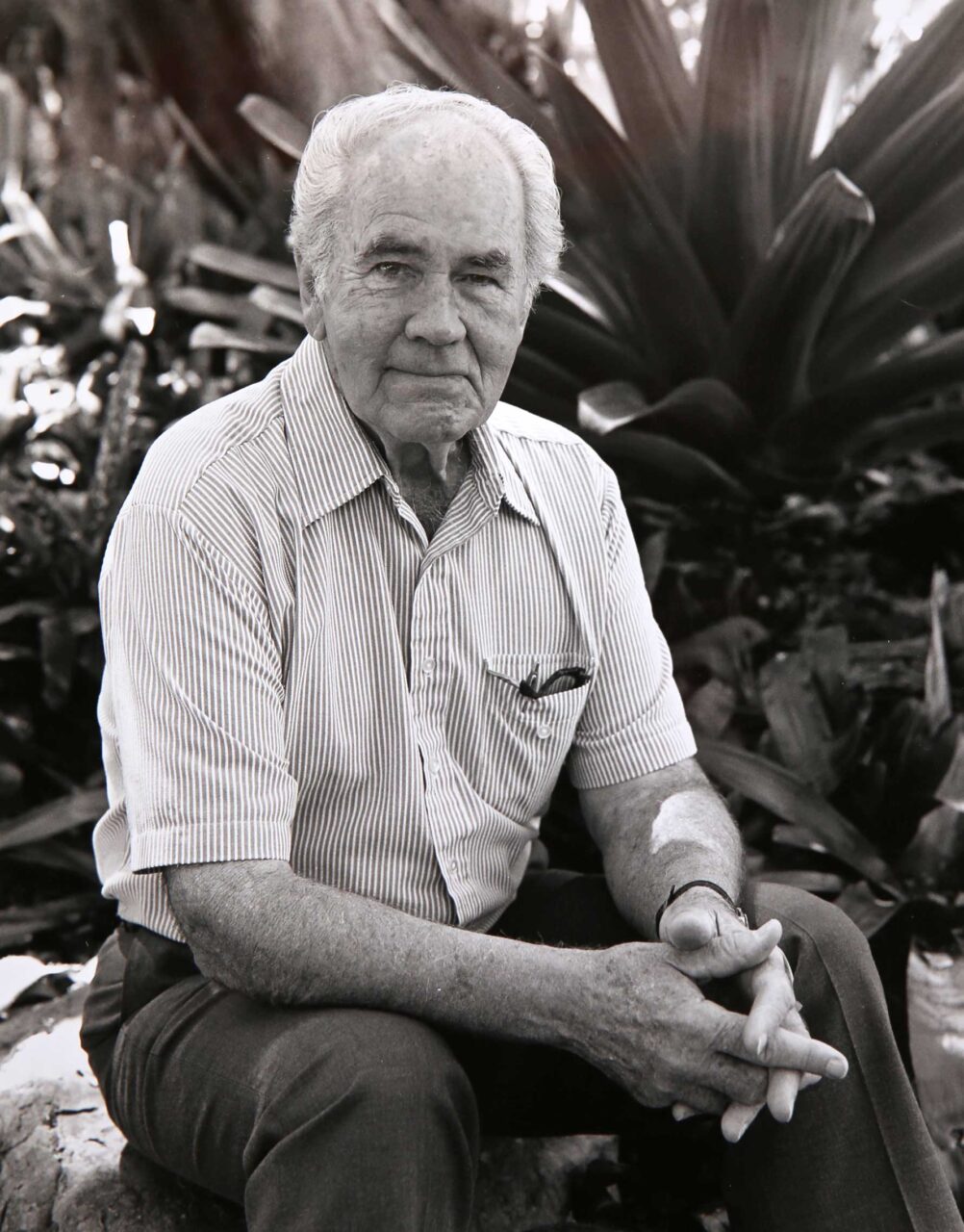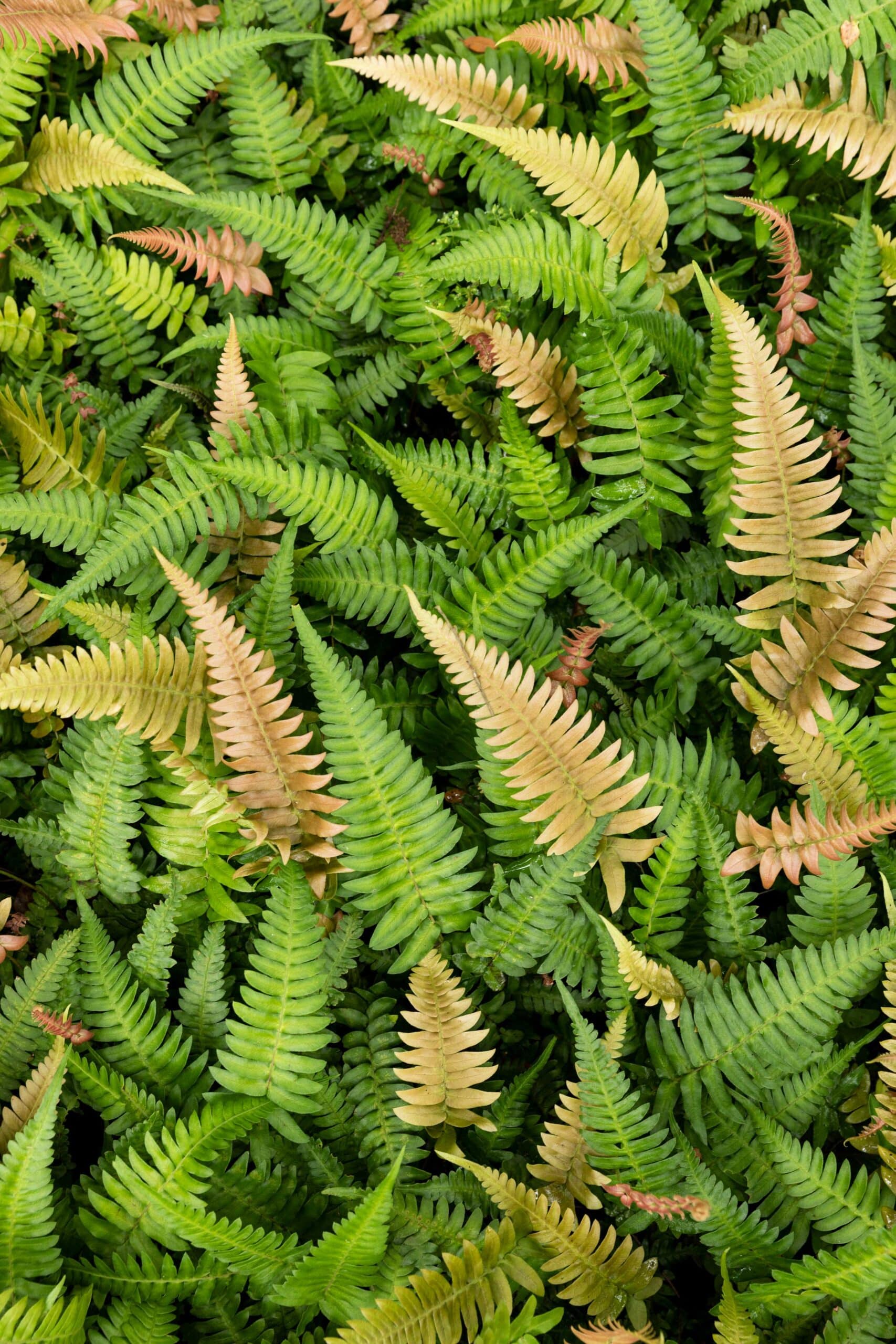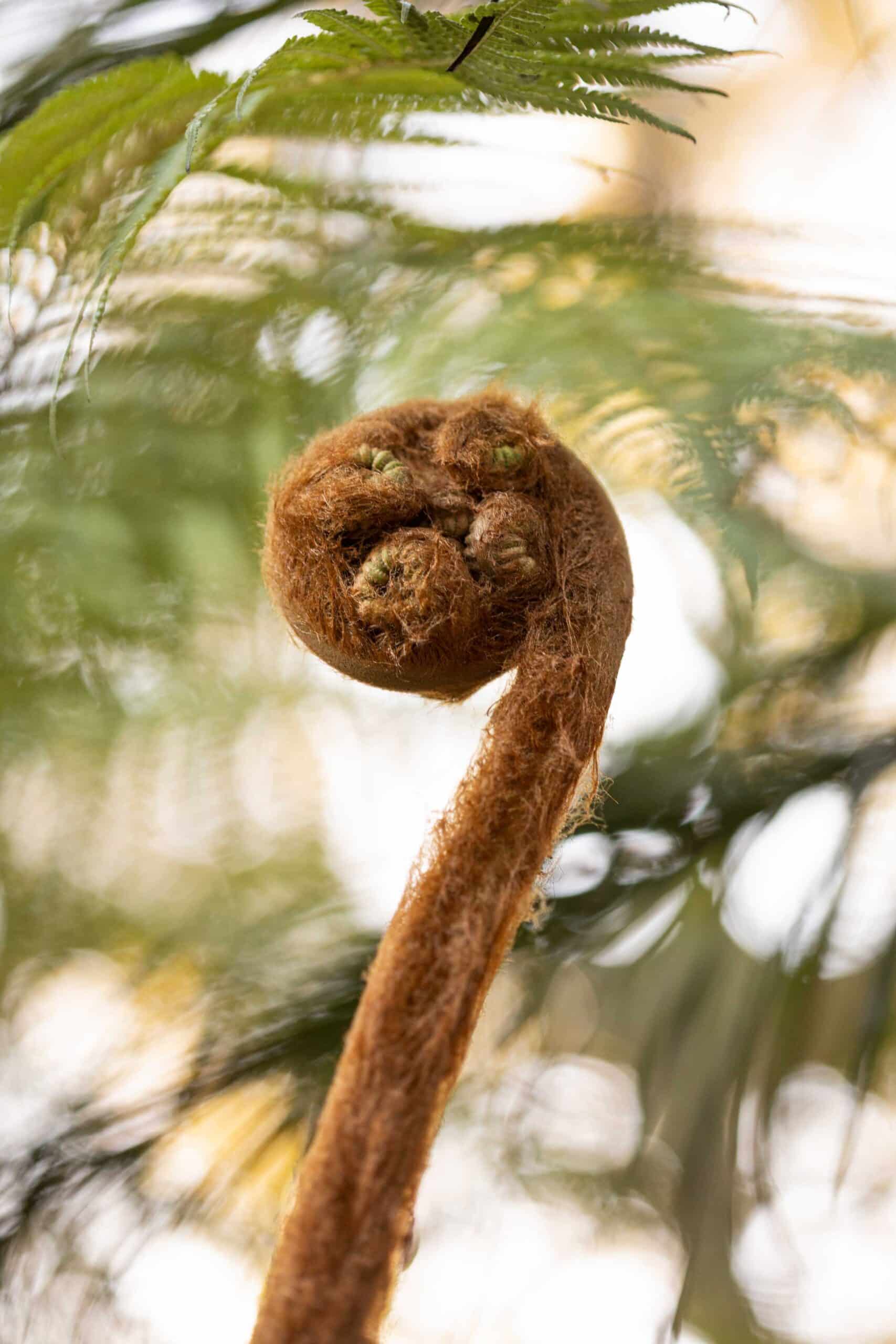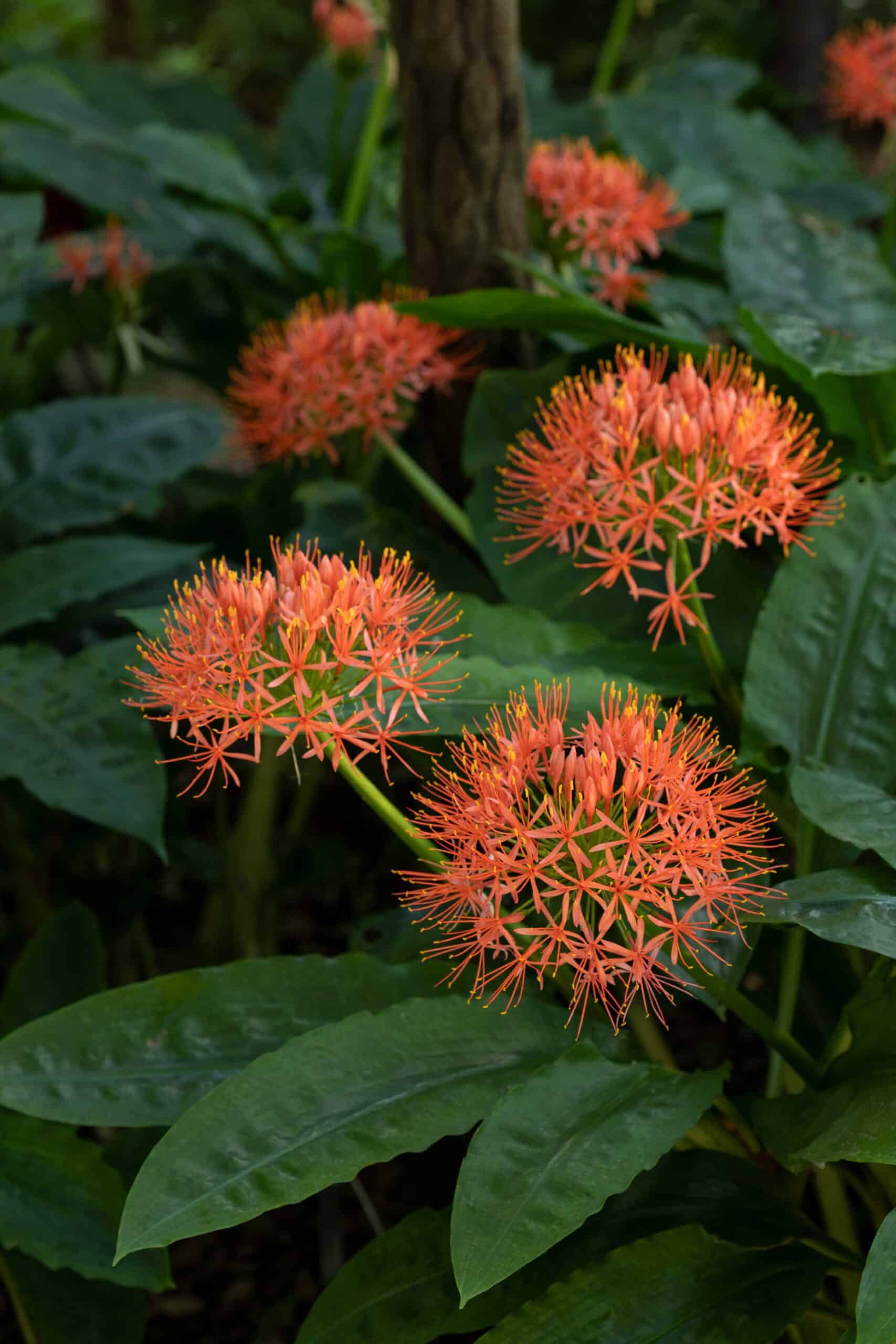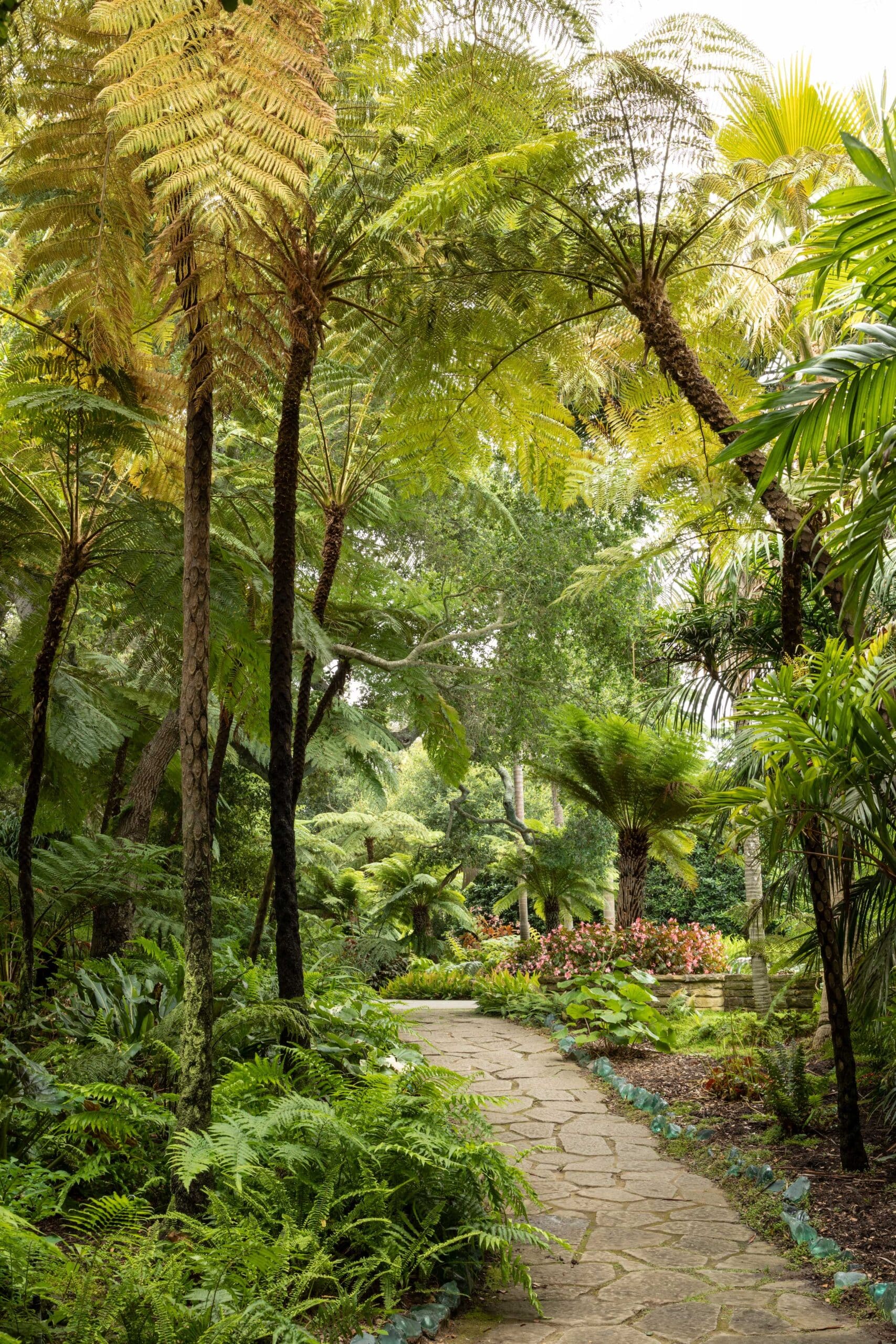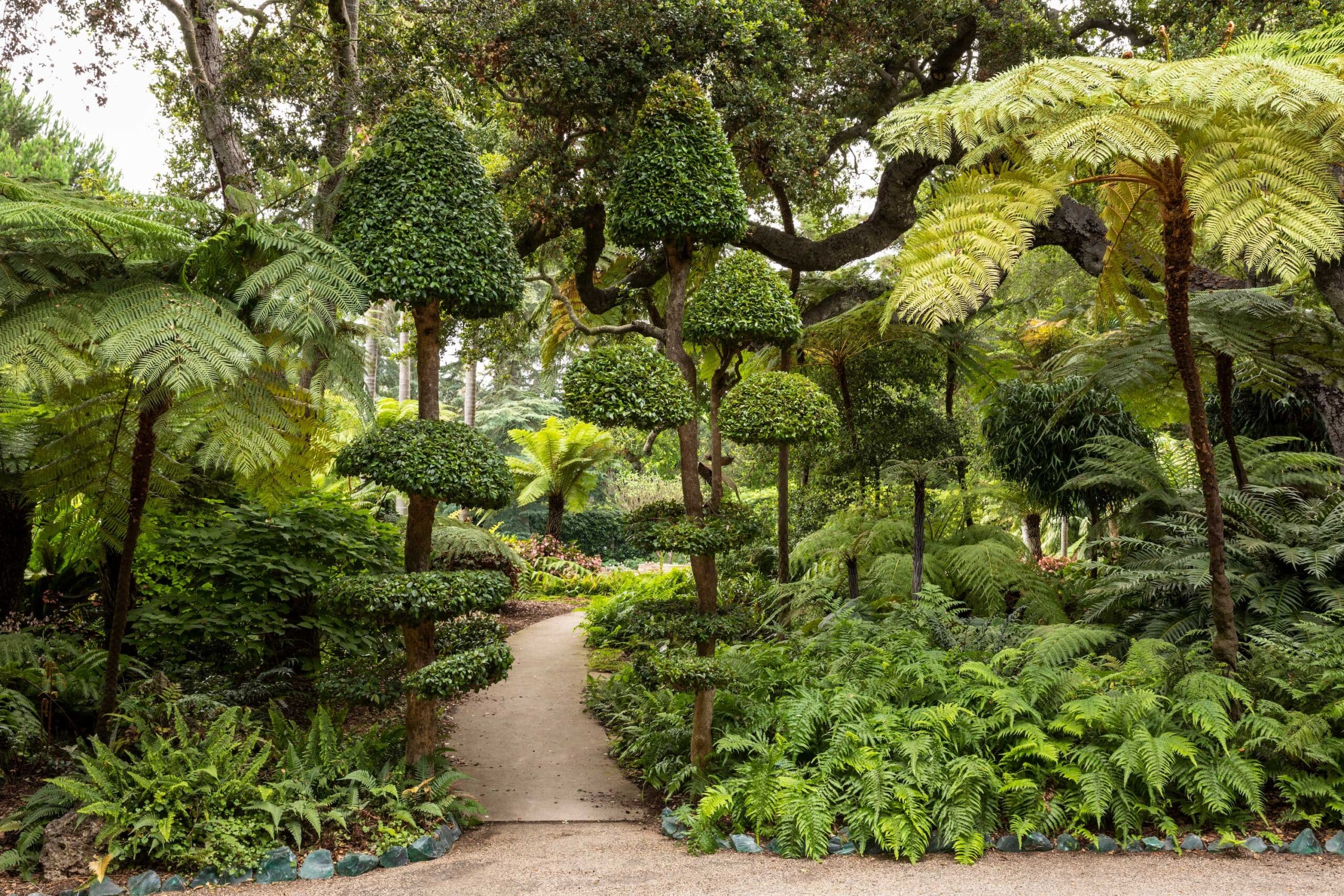Fern Garden
The shade-loving Fern Garden provides an air of whimsy
Fern Garden
The shade-loving Fern Garden provides an air of whimsy, as towering prehistoric tree ferns provide dappled sunlight on the myriad-shaped leaves of begonias. When in bloom, the bell-like flowers of angel’s trumpets herald visitors, while redwoods and oaks add to an overall feeling of ancient timelessness.
the
Noteworthy
Features
Staghorn Fern (Platycerium bifurcatum)
In the wild, this species grows clinging to tree trunks and branches. Its common name, staghorn fern, refers to its foliar fronds, which resemble deer antlers. Look closely and you will see a second distinct kind of frond, called a shield frond. These lie close to the host tree, bulging outward over the remains of previous shield fronds, and form a spongy substrate which captures rainwater and organic debris falling from above.
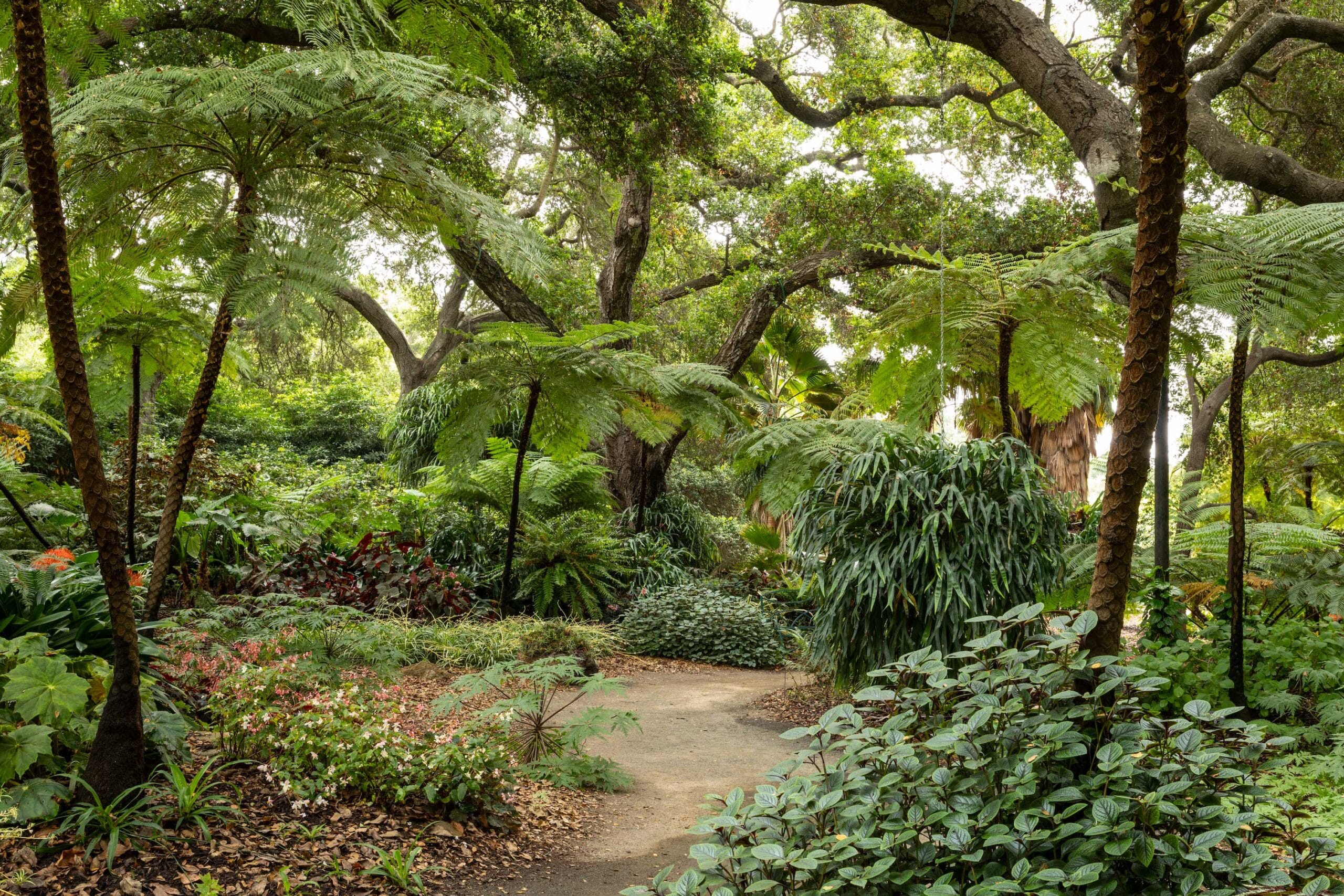
Australian Tree Fern (Cyathea cooperi)
Relatively few species of fern achieve such height as the Australian tree fern. It is also called the lacy tree fern after its delicate fronds. The fibrous trunk is ideal for growing air plants such as orchids and tree ferns have been widely harvested for this purpose.
Begonia ‘Lotusland’
Begonia ‘Lotusland’ was introduced by a nursery grower in Santa Barbara named Rudy Ziesenhenne. It was a chance seedling in Rudy’s greenhouse without a name until he was prodded by a National Geographic photographer to give it one. Begonia ‘Lotusland’ has large leaves and dainty pink flowers, Madame Walska’s favorite color.
The Fern’s Ancient Lineage
As you walk through this garden, see if you can spot rows of sori underneath the fronds of some ferns. Sori are made up of multiple tiny capsules called sporangia that house even tinier, unicellular spores, providing evidence of the fern’s ancient lineage. Ferns and their spores predate the evolution of seeds.
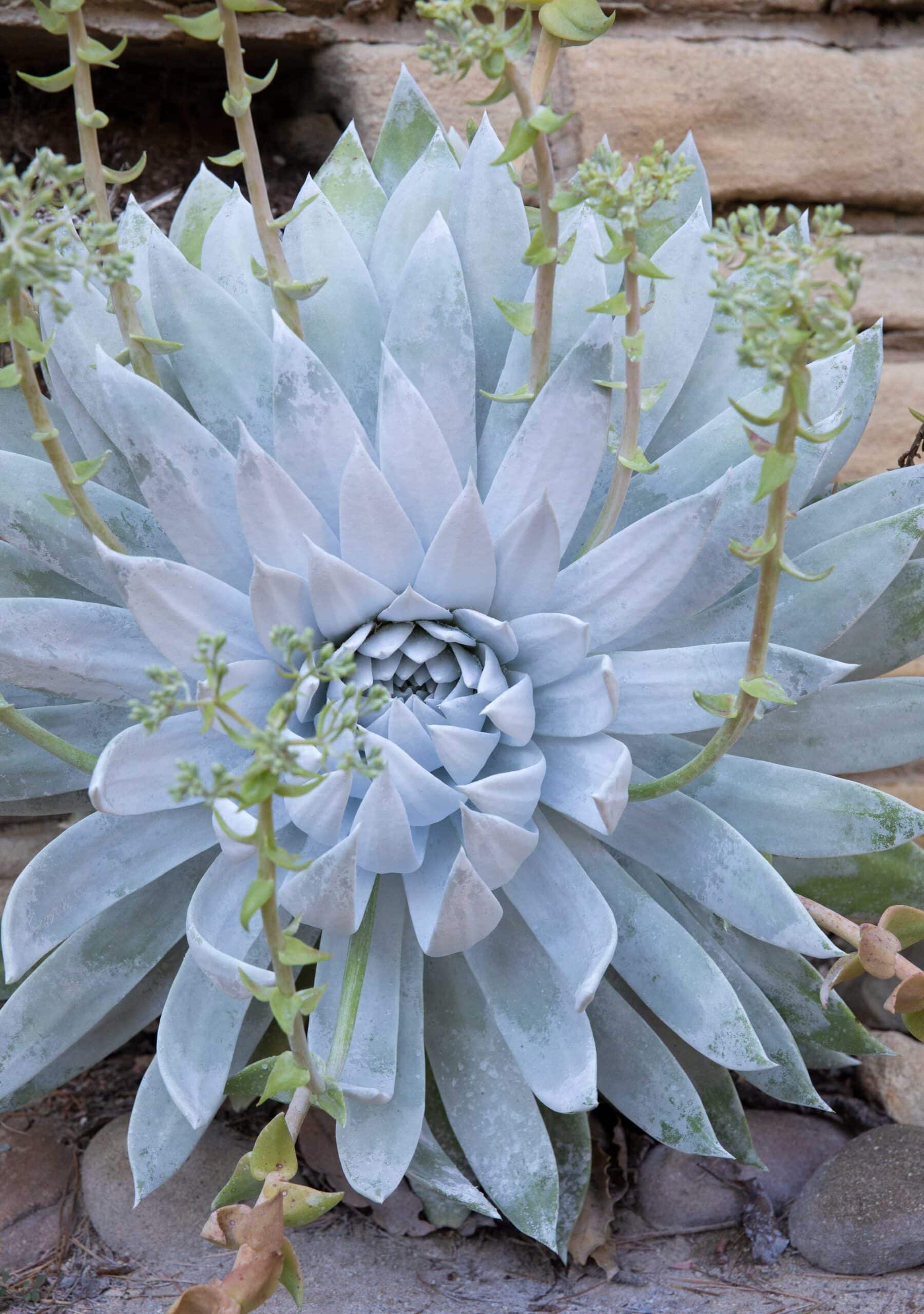
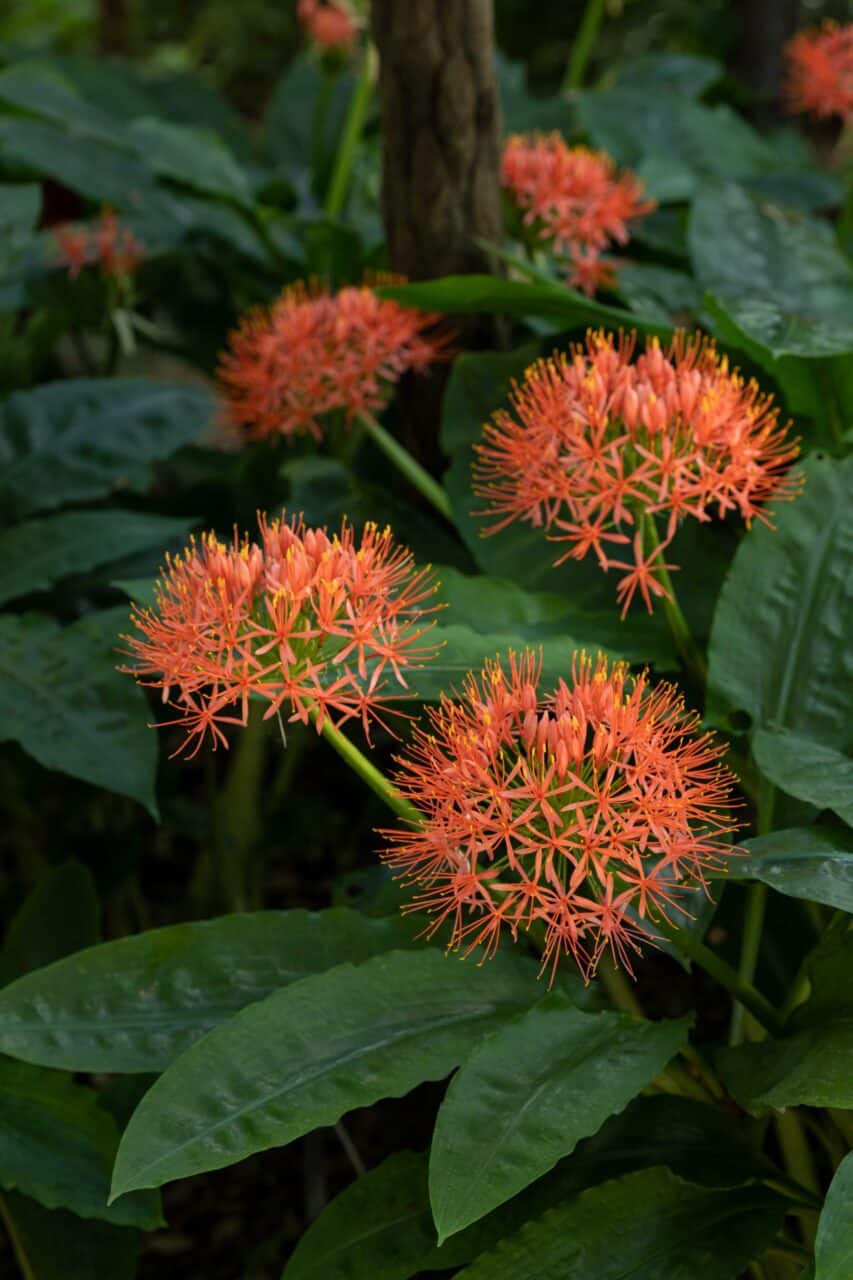
Notable Species
Platycerium bifurcatum (staghorn fern) and Cyathea cooperi (Australian tree fern) specimens are over 50 years old. Over 125 species and cultivars of Begonia, Dudleya brittonii, Brugmansia versicolor (angel’s trumpet), yellow-flowering Clivia, Neomarica gracilis (walking iris), Scadoxus multiflorus ssp. katharinae (blood lily), Zantedeschia aethiopica (calla lily), Alocasia odora, Xanthosoma sp., Farfugium cultivars
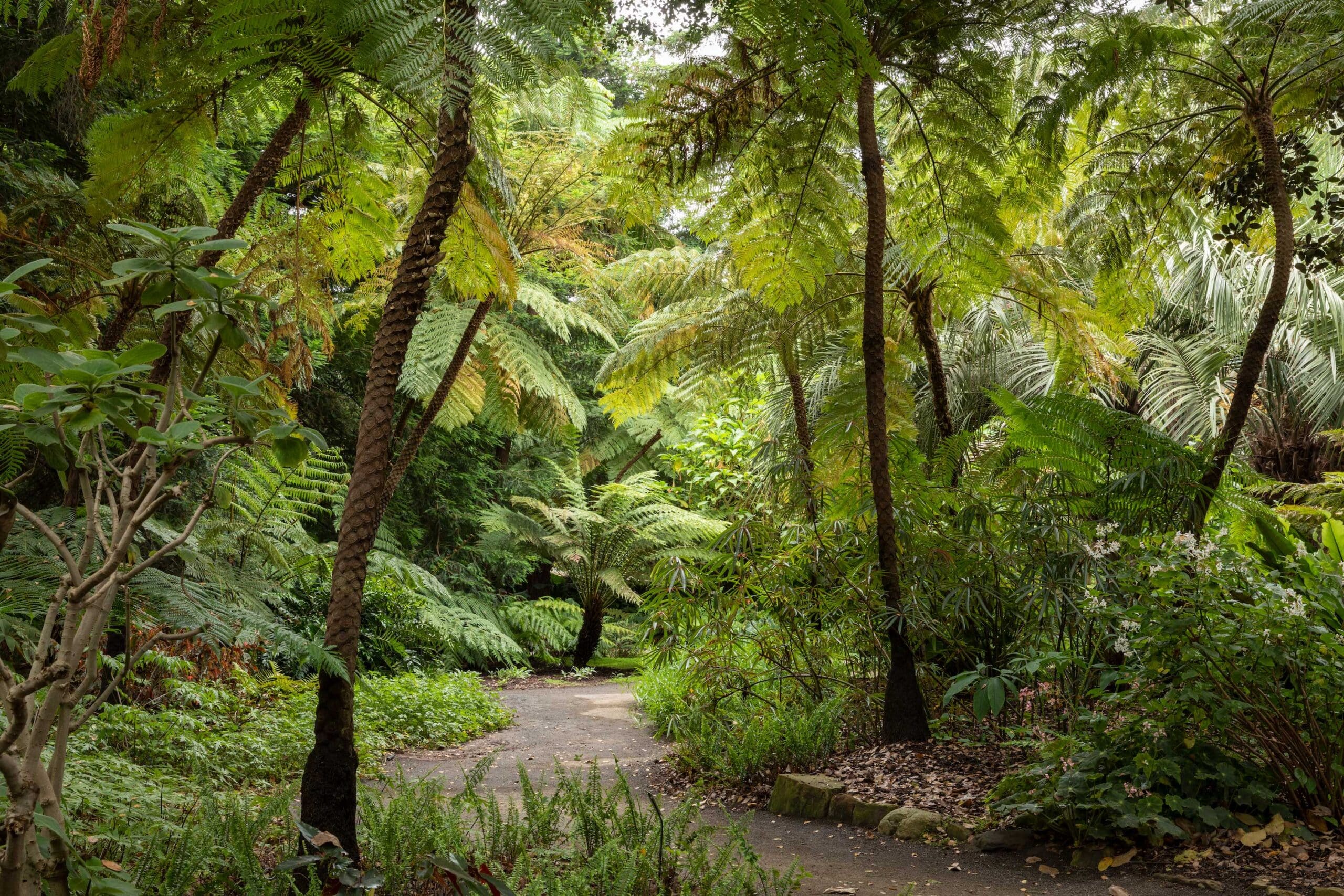
Ancestral Ferns
Ancestors of modern ferns were once the dominant vegetation on earth. As such, the products of their decay make up a large percentage of fossil fuels used today. Unfortunately, fossil fuels are a nonrenewable resource, requiring waiting millions of years for new coal, oil, and natural gas deposits to form. They will eventually run out.
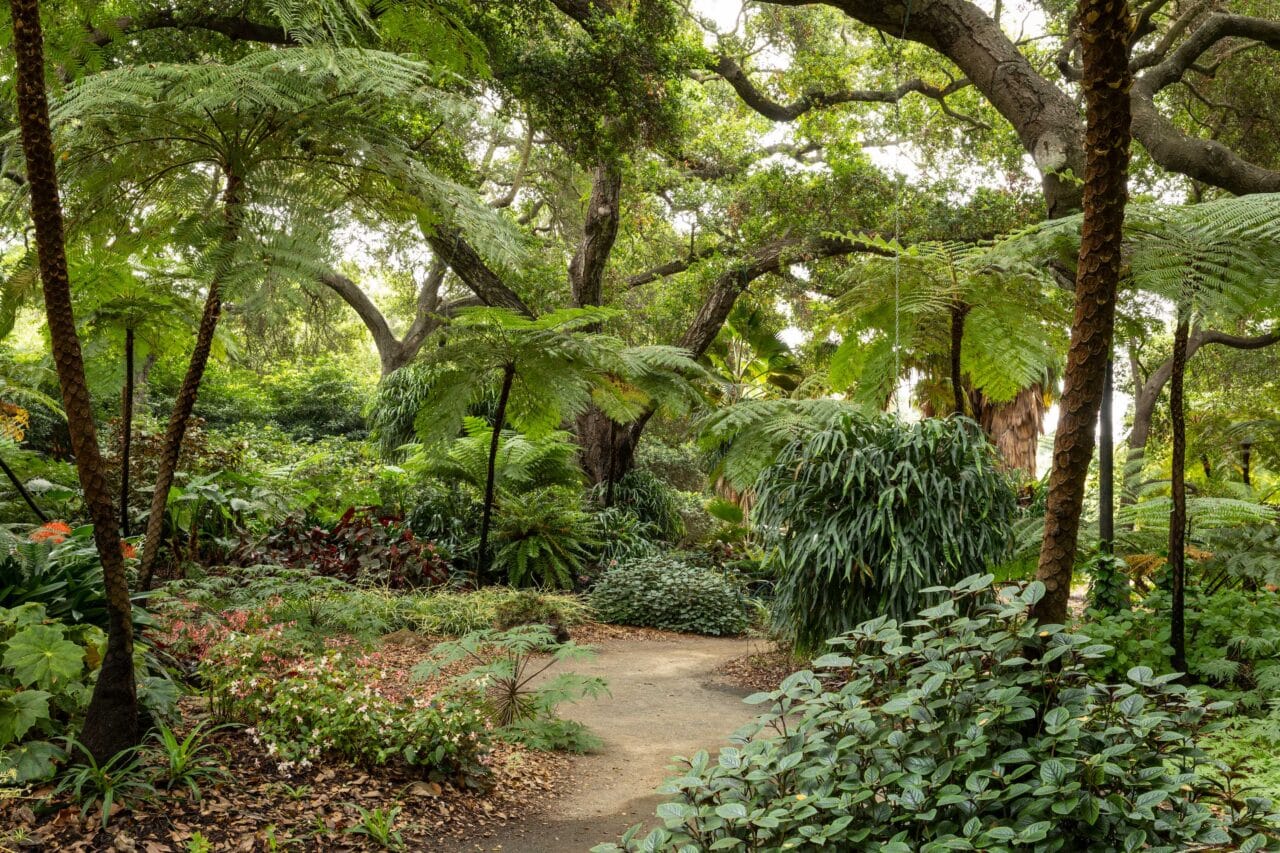
DID YOU KNOW?
Begonias take many forms; however, most can be identified by their asymmetrical leaves, with one side shorter than the other, resembling an elephant’s ear.
the
History
Clam Shells
First created between 1968 and 1972 and designed by horticulturist Bill Paylen, the garden was given an addition on its east side in 1987. The pool includes a sandy “beach” sporting giant clam shells, the same type of shells used for the fountains of the Aloe Garden. Madame Ganna Walska had the pool created for her niece, Hania, who lived with her mother and father in a cottage on the estate.
